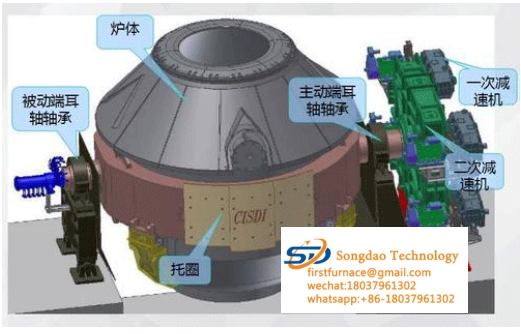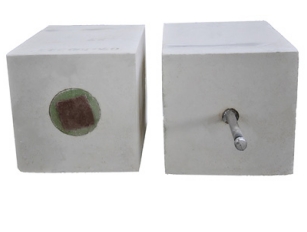- 17
- Nov
Masonry and maintenance of breathable bricks for converters
Masonry and maintenance of brik rèspirant for converters
Breathable bricks are the key equipment for compound blowing. There are many types. Among them, split-type breathable bricks contain two parts: a breathable core and a seat brick. From the perspective of its use and development, manufacturers generally have Seat bricks, and there will be other components, such as pad bricks. The construction of ventilating bricks for air supply elements refers to the construction of a set of combined bricks such as ventilating cores and seat bricks at the bottom of the furnace. In addition to its own structural characteristics, bottom blowing pressure, material composition, operation technology, etc., the service life of air-permeable bricks is also related to the quality of its masonry.


(Picture) Converter
In the actual production of steel manufacturers, due to the use of ventilated cores, the temperature of the surrounding refractory materials changes drastically, and the stirring force of the internal liquid is very strong, so the furnace bottom, especially the bricks around the tuyere, will be consumed more quickly. The use of corrosion-resistant, non-expandable, high-strength refractory materials, in addition to the method and quality of masonry also have a great impact on its life. As the cross-sectional shape of the ventilating brick increases, the thermal stress also increases, and the more likely it is to produce peeling loss. Therefore, the method of combining ventilating cores and seat bricks is currently used for masonry, which can relax its surroundings and the entire furnace bottom. Expansion and contraction caused by temperature changes. The masonry should be tight, the gap between two adjacent bricks should be minimized, the upper part of the brick should be laid flat, and no knotting material or refractory mixed powder should be used between the working layer and the safety layer. The ventilation brick should be vertical to the bottom of the furnace. After the bottom of the furnace is cut, the top of the ventilation brick should be adjusted to be level with proper concavity and convexity. In addition, the built-up furnace bottom must be elevated and stored to prevent the tailpipe of the ventilation brick from being damaged.
In addition, in addition to ensuring the quality of the masonry, certain maintenance work is also required. Compared with top blowing, double blowing and bottom blowing have weaker stirring power and higher carbon monoxide partial pressure in the furnace, so the metallurgical properties are not very good, but the bottom life of the furnace is higher

(Foto) brik lè enpèmeyab
The stronger the molten steel is stirred, the faster the flow rate of the molten steel on the bottom of the furnace is, and the faster the loss of the ventilating brick will be. The flow of molten steel is also affected by the arrangement of brick cores. In a furnace bottom with multiple cores, the smaller the spacing, the greater the flow rate of molten steel on the bottom surface, and the greater the loss. Only blowing inert gases such as nitrogen and argon will cause much less loss than blowing oxygen. Reasonable arrangement of the structure, selection of materials, processing, forming, assembly, and masonry all have an impact on the life of the breathable brick.
firstfurnace@gmil.com has been specialized in producing ventilated bricks for 18 years, with a variety of types of reasonable structure, and the material composition can be customized according to customer needs. It is suitable for the smelting environment of molten steel of various steel-making manufacturers. It is a professional manufacturer and trustworthy.
